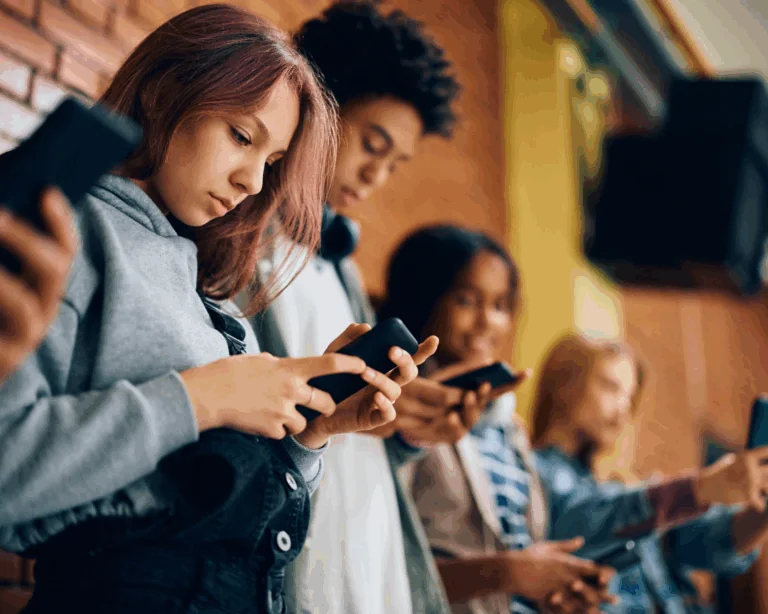Helping Adolescents Navigate Their Digital Lives
While online spaces can hold a lot of benefits for adolescents, they also come with particular risks that can be difficult to handle alone.

Read Time: 4 minutes
Published:
In the United States, teens spend an average of 7.5 hours every day looking at screens. In the wake of the COVID-19 pandemic, screen time rose in Europe, Asia, and the Americas across all ages, but the steepest jump was among teens, as daily life, learning, and connection increasingly depended on digital devices.
Teens’ days are shaped by constant digital connection. A recent Gallup Poll found that teens spend an average of 4.8 hours a day on YouTube, Instagram, TikTok, and other social media apps. This time online shapes how they see themselves and build relationships. Online spaces can ease loneliness, strengthen friendships, and provide access to mental health information that might be hard to find offline. But social media has also been tied to risks of anxiety, depression, and low self-esteem, especially when teens compare themselves to carefully curated images of influencers, as well as their peers.
To better understand how teens themselves view these trade-offs, Leo Zeigel and colleagues worked with UNICEF to analyze data from 71 focus groups with adolescents in 13 countries. Focus groups were conducted in adolescents’ local language and separated by gender and age (12-15 years and 16-19 years). The conversations, held during 2021, asked young people about how different social environments affect their mental health. By listening directly to teens in settings from Sweden to Malawi, the research team explored how adolescents experience the risks and benefits of their digital worlds.
The researchers asked questions about mental health in relation to different spheres of daily life: at home, in school, with peers, and in their broader communities. Digital communication was a topic of discussion among teens in 11 of the 13 countries. Overall, there were more similarities than differences across countries, although there was less discussion of digital communication from groups in low-income countries.
Unless [adolescents] are taught how to handle the pressures, conflicts, and opportunities that unfold [online], they will be left to navigate one of the most powerful forces in their lives alone.
Focus group participants discussed downsides of digital life, including constant self-comparison to influencers and classmates, cyberbullying, sexual harassment, and hours lost to scrolling. “You compare yourself with other people,” said one 16–19-year-old boy in Sweden. “You don’t see that they are another human being, that they have other problems. You only see this facade of a human being that is perfect and it makes you feel worse.”
The young people interviewed also described benefits, which included keeping friendships alive, finding new friends with shared interests, and turning to strangers online for support when talking to someone in person feels impossible. “Sometimes you get stuck on the internet because there are people who you can get to know, who, for example, have the same interests, and there you no longer feel rejected,” said one 12–15-year-old girl in Chile. “The people around you, they do not accept you…[the internet] can make you feel better, like you are not alone.”
The teens in these focus groups repeatedly expressed that they wanted parents, teachers, and other adults to better understand their online worlds and guide them through the risks without cutting them off from the connections they value.
These findings align with earlier research showing the benefits of parental involvement in teens’ digital lives. In one study, researchers found that both parental regulation of screen time and parent-child relationships shape mental health, meaning there are multiple ways parents can support their kids.
Adult guidance can take many forms: teaching digital literacy in classrooms, helping teens spot harmful content, or simply listening when young people talk about their online lives. The researchers emphasize that the most effective strategies are those created with adolescents themselves, blending their insights with adult support to encourage healthier, more balanced digital lives.
Adolescents are already deeply embedded in digital spaces. Unless they are taught how to handle the pressures, conflicts, and opportunities that unfold there, they will be left to navigate one of the most powerful forces in their lives alone. Supporting adolescent mental health today means equipping them with skills to navigate digital spaces safely and thrive both online and off.



